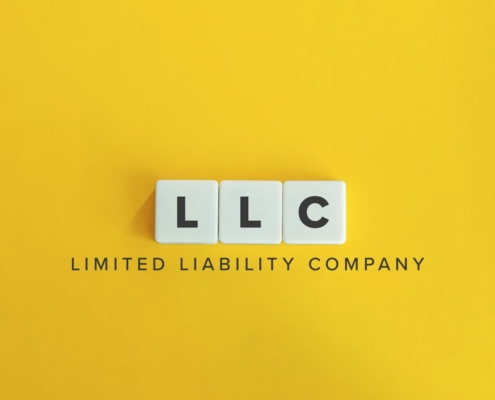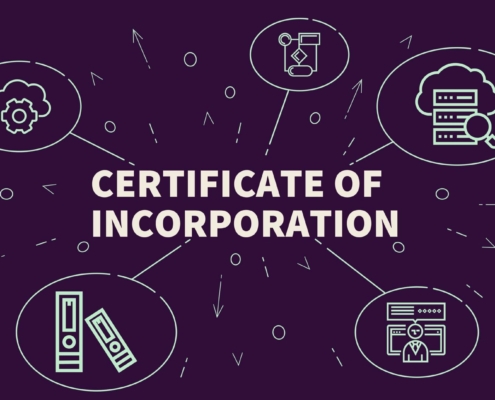Corporate Dissolution
When a corporation is first set up, a business owner must file articles of incorporation with the California Secretary of State. Similarly, when a business owner wishes to close, or dissolve, their business, he or she must file a certificate of dissolution with the Secretary of State. This certificate of dissolution lets the Secretary of State know that the business owner is terminating his or her California corporation, effectively closing it for good. Dissolution is a process that involves a number of steps.
The first step would be to finish conducting corporate business in California. Even with active business concluded, the corporation would still exist under state law, even though no business is being done. This means that unless a business owner files to close his or her corporation with the Secretary of State, he or she is still responsible for the legal requirements that come with owning and managing a corporation. The business owner will still have to file biannual statements, for example. Believe it or not, if this is not done, the business owner will face fines or penalties, despite not doing any active business.
Let’s go over the steps to file for corporate dissolution in California.
1. Board Meeting and Vote
When a business owner decides to end operations and shut down his or her corporation in California, the first thing they should do is to hold a Board of Directors meeting. This a formal meeting during which the owner will submit a motion to dissolve the corporation. The people present at the meeting will take an official vote. Someone present should take note of what occurs at the meeting in the corporate minutes in order to maintain a record of proceedings.
If the Board of Directors approves the vote to dissolve the corporation, an owner will still need the majority of shareholders in the corporation to approve dissolution. A written agreement must be signed by the shareholders approving the dissolution prior to the owner filing with the Secretary of State.
2. Certificate of Dissolution
If an owner was hoping to have a personal meeting with the California Secretary of State, they will be disappointed. Almost no one has a personal meeting to physically speak with the Secretary of State! Thankfully, the office’s website has forms that may be completed to file for a certificate of dissolution. In order to begin the dissolution of a corporation with the Secretary of State, a business owner needs to first fill out and file a certificate of election. This form is called “Form ELEC STK.” They must also fill out a certificate of dissolution, which is known as “Form DISS STK.” The exception to this is if all the shareholders voted unanimously to dissolve the corporation. In this case, the business owner only needs to fill out the certificate of dissolution, and not the certificate of election.
3. Short Form Certificate of Dissolution
That said, if the corporation may be classified as a California domestic stock corporation, then the business owner can potentially file the short form certificate of dissolution. This form is known as “Form DSF STK.” In order for this exception to apply, the corporation must meet the following conditions:
- It is filing within 12 months of the date of filing articles of incorporation with the Secretary of State
- It has not conducted any business
- It has or will file a final tax return with the Franchise Tax Board
- It owns no debts or liabilities other than tax liability
- It makes sure that any tax liability will be satisfied on a taxes paid basis or the liability will be assumed
- It has not issued any shares and returned all payments by investors
- Its dissolution has been approved by the incorporator and the majority of directors
- All assets have been distributed to entitled persons, or no assets have been acquired
The forms listed above only apply to corporations in California. They do not apply to LLCs or nonprofit organizations in California, which require different forms to be dissolved.
4. Inform Federal and State Tax Agencies
Once a business owner files the necessary forms with the state of California, he or she must notify the Internal Revenue Service (IRS) and the California Franchise Tax Board (FTB) about the dissolution of the corporation. The final tax return should appropriately be labeled “Final Return.”
Historically, this process included filing final tax returns in order to receive a tax clearance certificate, which would then be submitted to the Secretary of State. But in 2006, California’s bill AB 2341 got rid of the tax clearance certificate requirement. That said, a dissolved California corporation still has to file a final return and pay any liabilities. According to California Code of Regulations Section 23151, once it is dissolved, a corporation remains liable for any unpaid returns or tax liabilities.
5. Close Accounts, Lines of Credit, and Licenses
Closing a corporation, like any business, requires tying up loose ends and shutting down all aspects of the business. Bank accounts need to be closed, as do vendor accounts and lines of credit held in the enterprise name. Special licenses and permits must also be terminated in good time. And of course, all customers and venders should be duly notified about the business’ closure and dissolution.















